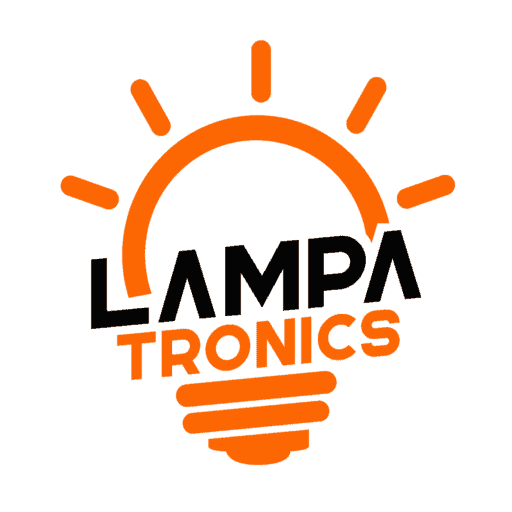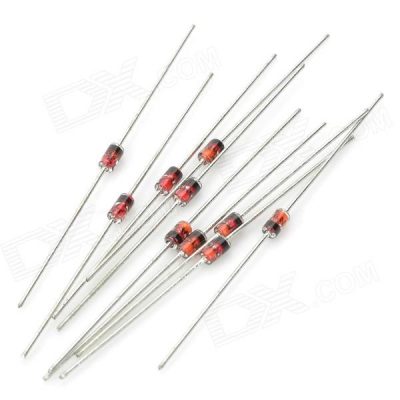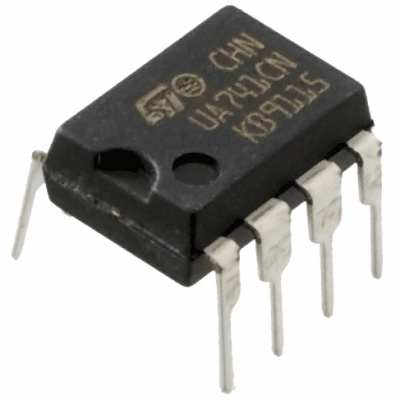74574 (Octal D-type Flip-Flop with 3-state outputs)
Description
The 74574 is an Octal D-type Flip-Flop with 3-state outputs. It is part of the 7400 series of ICs and is typically used for storing and manipulating 8-bit binary data. This IC is widely used in digital circuits where you need to store data, and it has the ability to control the data flow through the use of its tri-state outputs.
74574 IC Description:
The 74574 is an 8-bit D-type flip-flop with 3-state outputs and is designed to store 8-bit data. It has a clock input and a clear input, and the flip-flops are triggered on the rising edge of the clock. The outputs are tri-state (high-impedance), meaning they can either output a logic high (1), a logic low (0), or be in a high-impedance state (which effectively disconnects the output from the circuit).
Key Features:
- 8 D-type Flip-Flops: It has 8 individual D-type flip-flops, allowing it to store 8 bits of data.
- 3-State Outputs: The outputs are tri-state, meaning they can be in one of three states: logic high (1), logic low (0), or high-impedance (which disconnects the output).
- Clocked Operation: The flip-flops are edge-triggered, meaning they update their state on the rising edge of the clock.
- Clear Function: It has an active-low clear pin that resets all the flip-flops to 0 when triggered.
- Enable Pin: The IC has an enable (OE) pin that controls whether the outputs are active or in a high-impedance state.
- TTL Compatible: The IC is compatible with TTL (Transistor-Transistor Logic) logic levels.
Pin Configuration (16-pin package):
Here’s the pinout for the 74574 Octal D-type flip-flop with 3-state outputs:
- Pin 1 (Q1): Output of flip-flop 1.
- Pin 2 (Q2): Output of flip-flop 2.
- Pin 3 (Q3): Output of flip-flop 3.
- Pin 4 (Q4): Output of flip-flop 4.
- Pin 5 (Q5): Output of flip-flop 5.
- Pin 6 (Q6): Output of flip-flop 6.
- Pin 7 (Q7): Output of flip-flop 7.
- Pin 8 (Q8): Output of flip-flop 8.
- Pin 9 (Clear): Active-low clear input (resets all flip-flops to 0).
- Pin 10 (Clock): Clock input (triggers flip-flops on the rising edge).
- Pin 11 (D1): Data input for flip-flop 1.
- Pin 12 (D2): Data input for flip-flop 2.
- Pin 13 (D3): Data input for flip-flop 3.
- Pin 14 (D4): Data input for flip-flop 4.
- Pin 15 (Enable): Output enable (OE) pin, controls whether outputs are active or high-impedance.
- Pin 16 (Vcc): Supply voltage (typically 5V).
How It Works:
- Data Storage:
- The 74574 is composed of 8 individual D-type flip-flops, and each flip-flop stores one bit of data. The data input is controlled by the D1 to D8 inputs (pins 11 to 18).
- When the clock signal (Clock) is applied, the D input for each flip-flop is captured and stored. This operation happens on the rising edge of the clock signal.
- Tri-state Outputs:
- The outputs of the flip-flops (Q1 to Q8) are tri-state outputs, meaning they can be in one of three states: high, low, or high-impedance (disconnected).
- The Enable (OE) pin (pin 15) controls whether the outputs are active. When OE is low, the outputs are active and will reflect the stored data. When OE is high, the outputs are in a high-impedance state, effectively disconnecting them from the circuit.
- Clear Function:
- The Clear pin (pin 9) is active-low, meaning that when it is low, all flip-flops are cleared, and their outputs are set to 0.
- Clocking:
- The flip-flops update their stored data on the rising edge of the clock signal. Each bit of data is transferred to the corresponding flip-flop at the moment the clock signal transitions from low to high.
Truth Table:
| Clear (CLR) | Clock (CLK) | D (Data) | Q (Output) | OE (Enable) | Output State |
|---|---|---|---|---|---|
| Low | – | – | Low | X | All outputs cleared |
| High | Rising Edge | 0 | 0 | Low | Q follows D input |
| High | Rising Edge | 1 | 1 | Low | Q follows D input |
| High | – | – | High-Z | High | Outputs in high-impedance |
Applications:
- Data Storage: The 74574 can be used in digital circuits to temporarily store 8 bits of data, providing a simple form of data buffering.
- Shift Registers: The IC can be used in combination with other logic devices to create shift registers or serial-to-parallel conversion circuits.
- Bus Drivers: The tri-state outputs allow the 74574 to be used as a bus driver, where multiple devices may be connected to the same data bus, but only one device drives the bus at a time.
- Digital Latches: It can function as a digital latch in various applications where you need to control data flow and hold data temporarily.
- Memory Storage: It can be used in memory storage applications like storing intermediate values in calculators, controllers, or digital signal processing circuits.
- Data Transmission: The IC is useful in systems where parallel data needs to be transmitted or shared between different parts of the system, like parallel I/O devices or microcontroller-based systems.
Electrical Characteristics:
- Supply Voltage (Vcc): Typically 5V, but it can also work within the range of 4.5V to 5.5V.
- Current Consumption: The 74574 is a CMOS IC, meaning it has low power consumption.
- Output Drive: The IC is capable of driving TTL-compatible outputs (high/low logic levels).
- Propagation Delay: The flip-flops typically have a small propagation delay, which is the time it takes for the output to reflect the input after the clock signal rises.
Example Circuit:
In a typical application, the 74574 could be used to latch data from a microcontroller or other digital circuit and store it in parallel for later use. The D inputs would receive data from the microcontroller, and the Clock pin would be used to latch the data into the flip-flops. The outputs (Q1 to Q8) could be connected to LEDs or other display devices to show the stored data. The Enable pin would control whether the data is being actively output or if the outputs are in a high-impedance state.
Only logged in customers who have purchased this product may leave a review.
- Image
- SKU
- Rating
- Price
- Stock
- Availability
- Add to cart
- Description
- Content
- Weight
- Dimensions
- Additional information







Reviews
There are no reviews yet.